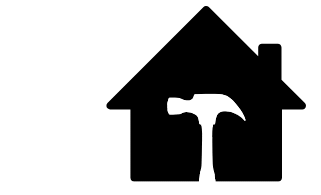Conservatories are now one of the key reasons homeowners decide to stay at their current properties. When it comes to making a decision between moving and staying put, a lot now comes down to cost.
That’s because it’s now so expensive to relocate. When you take into account solicitors, estate agents, and stamp duty, your expenses could easily rise over £10,000.
On the other hand, by installing a conservatory, you can get the extra space you need whilst adding thousands of pounds to your home’s value.
So, to help you out, take a look at our guide on how to guarantee adding value with a conservatory.
Match your home
One of the most important parts of investing in a conservatory is ensuring it complements the rest of your property. You don’t want something that’ll stick out like a sore thumb; instead, blending in seamlessly. This can be achieved in a few ways. Try and use exterior materials that match your home, such as the brick colours. Also consider using the same flooring to run between your home and the conservatory.
Don’t overbuild
You want plenty of extra space, right? Then why not have a huge conservatory at the back of your home? It may seem like a cracking idea at first, but the larger the conservatory, the more of your garden you’re eating up. If you only had a small garden to start, this isn’t ideal. Many people consider their conservatory an extension of the garden, so make sure not to ruin the appeal.
Shop around
We’ve all heard the horror stories of cowboy builders and rogue traders. You’ve probably even switched on the TV to find a programme putting these dodgy companies in the spotlight. Of course,t then what happens is the company will take a huge deposit and complete a shoddy jo,b or sometimes never show at all. So how can you avoid this? By shopping around. Never pay a substantial deposit, ask for a portfolio of wok,, and always ask for references. Any tradesman worth his weight in salt will be more than happy to, obligee, and this is the same for any industry.
Ventilation and heating
Conservatories can turn into saunas in the summer months because of the large glass pane,s allowing plenty of the sun’s heat inside. Then in the winter, you could find your conservatory too cold. Avoid this altogether by ensuring you invest in quality ventilation and heating to keep a comfortablenvironmentnt no matter the time of year. For your heating, we would consider underfloor heating, which is an efficient way to keep warm.
Conclusion
A conservatory can be one of the smartest investments you make in your home—adding space, style, and potentially over £9,000 to your property’s value. The key is to ensure it matches your home, doesn’t overwhelm your garden, and is built to a high standard with the right heating and ventilation in place. When done right, a conservatory not only improves your quality of life but also boosts your home’s appeal to future buyers.
FAQs
Q1: How much value can a conservatory add to my home?
A: On average, a well-designed conservatory can add over £9,000 to your property’s value.
Q2: Do conservatories require planning permission?
A: Not always. Many conservatories fall under permitted development, but it’s best to check with your local planning authority before starting work.
Q3: What’s the best size for a conservatory?
A: Bigger isn’t always better. Choose a size that provides useful space but still leaves a good portion of the garden available.
Q4: Are conservatories energy-efficient?
A: With modern glazing, insulation, and underfloor heating, conservatories can be very energy-efficient. Choosing the right materials makes all the difference.



